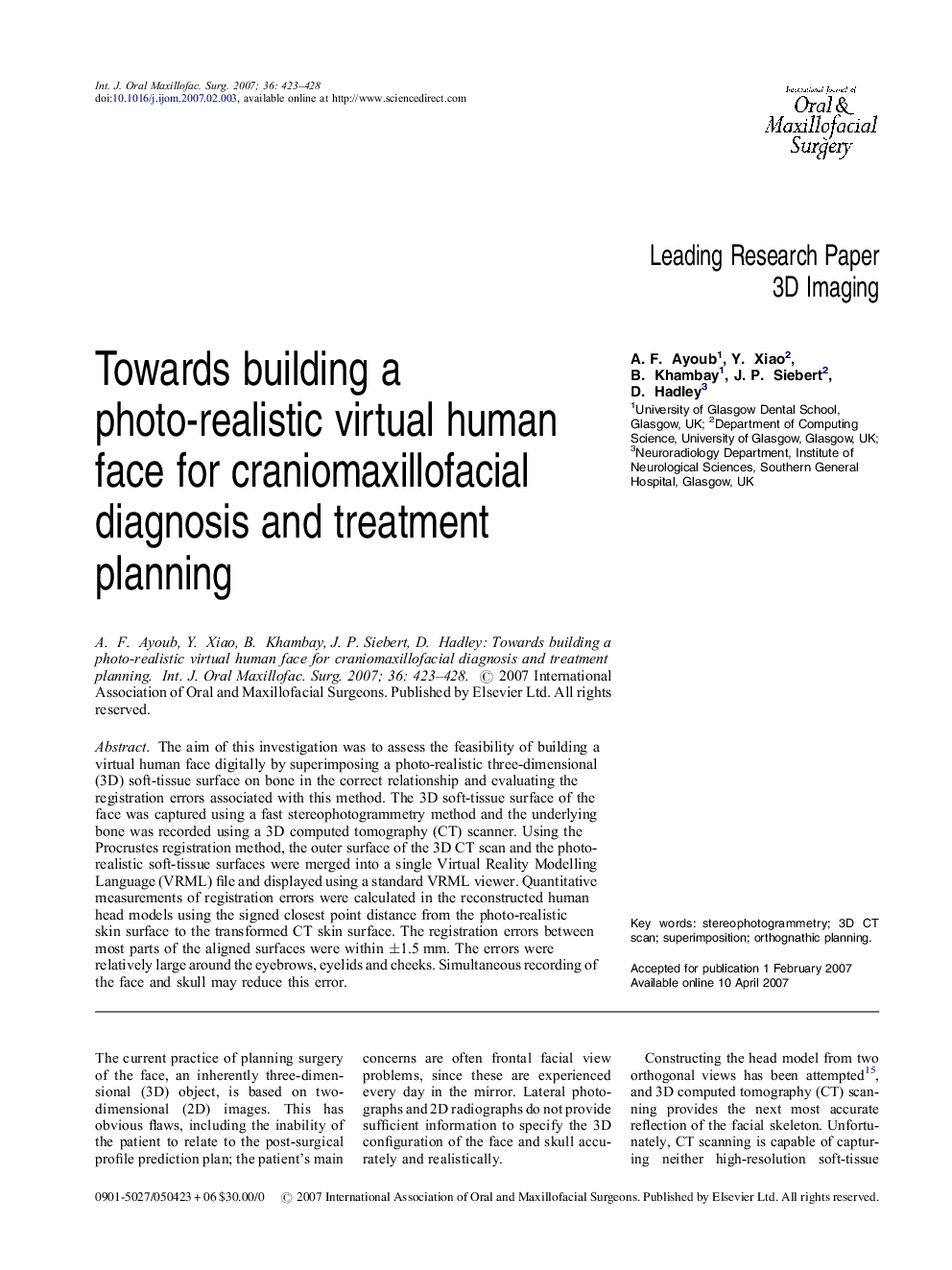| Article ID | Journal | Published Year | Pages | File Type |
|---|---|---|---|---|
| 3134746 | International Journal of Oral and Maxillofacial Surgery | 2007 | 6 Pages |
The aim of this investigation was to assess the feasibility of building a virtual human face digitally by superimposing a photo-realistic three-dimensional (3D) soft-tissue surface on bone in the correct relationship and evaluating the registration errors associated with this method. The 3D soft-tissue surface of the face was captured using a fast stereophotogrammetry method and the underlying bone was recorded using a 3D computed tomography (CT) scanner. Using the Procrustes registration method, the outer surface of the 3D CT scan and the photo-realistic soft-tissue surfaces were merged into a single Virtual Reality Modelling Language (VRML) file and displayed using a standard VRML viewer. Quantitative measurements of registration errors were calculated in the reconstructed human head models using the signed closest point distance from the photo-realistic skin surface to the transformed CT skin surface. The registration errors between most parts of the aligned surfaces were within ±1.5 mm. The errors were relatively large around the eyebrows, eyelids and cheeks. Simultaneous recording of the face and skull may reduce this error.
